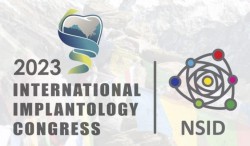Life & Health
While the government figures suggest that HIV/AIDS infections have declined significantly, many people living with HIV in Nepal still have to endure the stigma and discrimination in multiple settings.
According to the National Center for AIDS and STD Control (NSCASC) data, new infections declined by 84 per cent from 4,370 in 2000 to 680 cases in 2021. Of the total new HIV cases detected last year, 45 were children under 14.
A few people living with HIV that NepalMinute talked to have revealed their ordeal facing stigma and discrimination.
Soni (name changed) said: “I have felt changes in people’s behaviour when they know about my status. There is a change in their facial expression and body language. They start behaving indifferently. Sometimes they ignore, sometimes they gossip.”
Not only are those infected with HIV/AIDS socially discriminated against, but they also face stigmatisation and discrimination even in health centres.
Soni added: “The health workers don’t talk to me properly anymore after they learnt that I am HIV positive. They share my status with others without my consent.”
She said she had not revealed her status to friends for fear of stigma and discrimination. “If I tell now, it’s okay, but what will happen to me after two years? People will not accept me.”
Discrimination rampant
Soni is not alone in facing discrimination and an uncertain future.
The research titled ‘Nepal PLHIV Stigma Index Survey 2.0’, conducted by Save the Children, revealed that the stigma and discrimination stand at 9.5 per cent.
The study was based on interviews with 927 participants aged 18 years and above – 446 females and 481 males – from 21 districts in the country. Nineteen per cent, or one in five respondents, reported that health workers avoided physical contact/took extra precautions.
Eight per cent said health workers talked badly or gossiped about them because of their HIV status. Four per cent of the respondents experienced denial of health services because of their HIV status.
The most common experience of stigma and discrimination faced by the respondents was discriminatory remarks or gossiping by people other than family members (5 per cent), followed by discriminatory remarks or gossiping by their own family members (4 per cent) and verbal harassment (4 per cent).
Dr Ramesh Adhikari, the lead researcher, said: “The prevalence of stigma and discrimination is high among transgender (30 per cent), men having sex with men(22 per cent) and female sex workers (20 per cent).”
Similarly, 3 per cent of the respondents have experienced physical abuse – pushing, hitting, or being physically abusive from the health workers in the past 12 months.
Raju (name changed), living with HIV, said: “If you have access to education and good economic condition, then stigmatisation and discrimination will be comparatively low.
Health and appearance also make a difference, he added. “Stigmatisation and discrimination are rife among poor people. Once you test positive for the HIV infection, you are subject to various forms of discrimination, such as people talking ill about you, discriminatory practices while getting various health services, social stigma etc.”
Internalised stigma
Besides the external stigma, the people living with HIV also face internalised stigma. Almost one-third of the respondents (32 per cent) reported having felt internalised stigma due to their HIV status. A third of the respondents expressed feeling guilty for being HIV positive, the report shows.
Dr Sudha Devkota, director at NCASC, said, “Despite covering a few participants, the research gives way forward to make policies to lessen the number of cases and control stigma and discrimination in people living with HIV.”
HIV in Nepal remains concentrated mainly on people who inject drugs, sex workers and their clients, men having sex with men and transgender people, male labour migrants and their wives, and prison inmates.
“There is no cure for HIV infection,” the UN health body said. “However, with increasing access to effective HIV prevention, diagnosis, treatment and care, including for opportunistic infections, HIV infection has become a manageable chronic health condition, enabling people living with HIV to lead long and healthy lives.”
While an estimated 30,000 people are living with HIV in Nepal, only 21,723 are taking anti-retroviral drugs, according to NCASC. Of those who tested positive for the virus, 72 per cent are under ART treatment.
The data shows 510 people died of the infection in 2021.
Nepal’s target
Nepal has aimed to end the AIDS epidemic as a public health threat by 2030. It aims to reach a target of 95-95-95 by 2030. That is, 95 per cent of people living with HIV know their HIV status, 95 per cent of people living with HIV, who know their status initiate treatment, and 95 per cent of those on treatment are virally suppressed.
Prime Minister Sher Bahadur Deuba said in a statement: “The government has been working to meet the SDG goals 2030 for eliminating HIV/AIDS from Nepal. To meet the goals, the government has been advocating an increase in awareness, easy access to test and treatment of the HIV infected persons and making the situation favourable for people living with HIV to live a dignified life without facing discrimination and stigma.”
The WHO has called on global leaders and citizens to boldly recognise and address the inequalities that are holding back progress in attaining the global goal to end AIDS by 2030.
“With global solidarity and bold leadership, we can ensure everyone receives the care they need,” said WHO Director-General Dr Tedros Adhanom Ghebreyesus.
WHO facts
According to the World Health Organization, human immunodeficiency virus (HIV) is an infection that attacks the body’s immune system, specifically the white blood cells called CD4 cells. HIV destroys these CD4 cells, weakening a person’s immunity against opportunistic infections, such as tuberculosis and fungal infections, severe bacterial infections and some cancers.
- HIV can be transmitted via the exchange of a variety of body fluids from infected people, such as blood, breast milk, semen and vaginal secretions.
- HIV can also be transmitted from a mother to her child during pregnancy and delivery.
- Individuals cannot become infected through ordinary day-to-day contacts such as kissing, hugging, shaking hands, or sharing personal objects, food or water.

_11zon1681280198.jpg)




